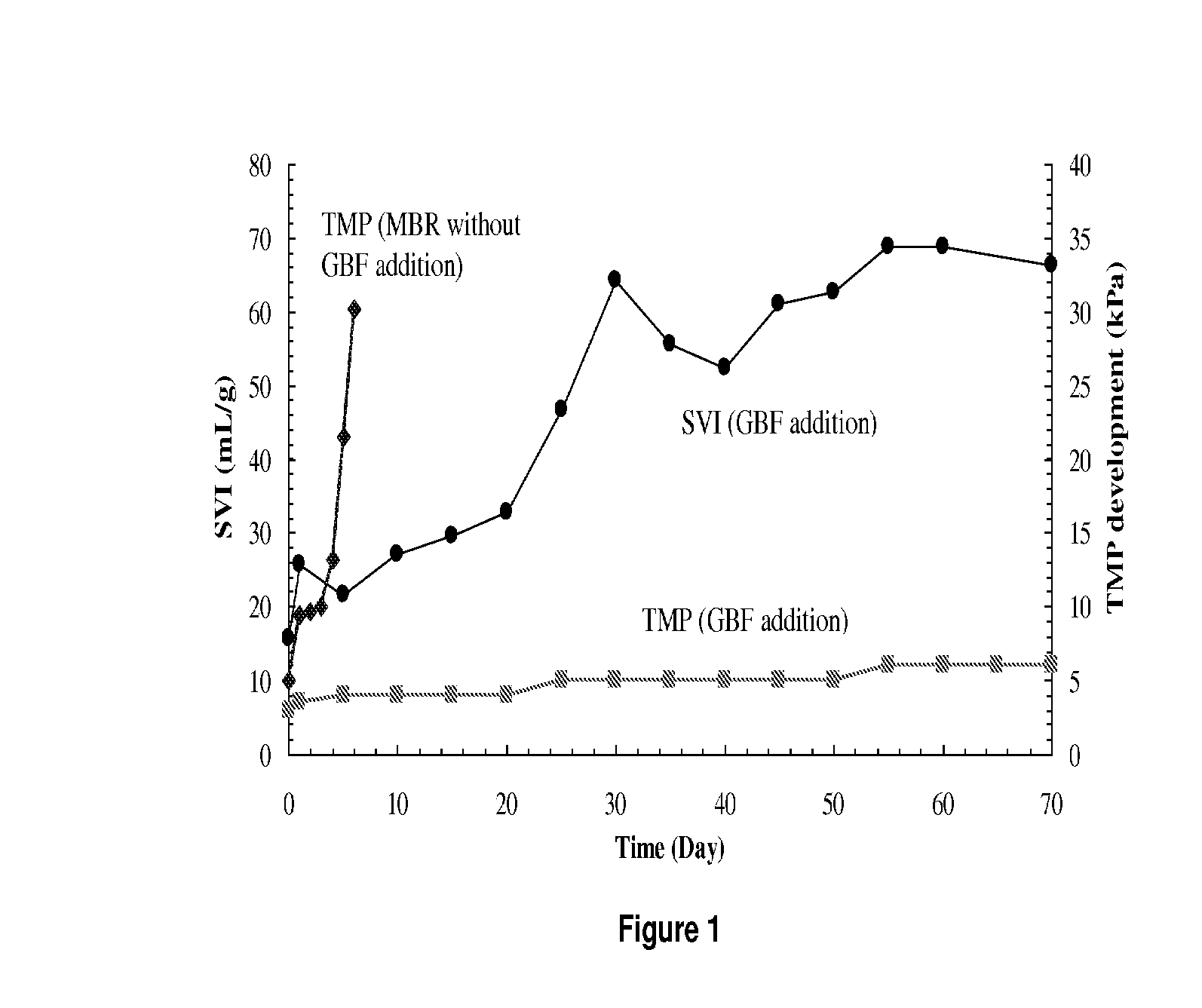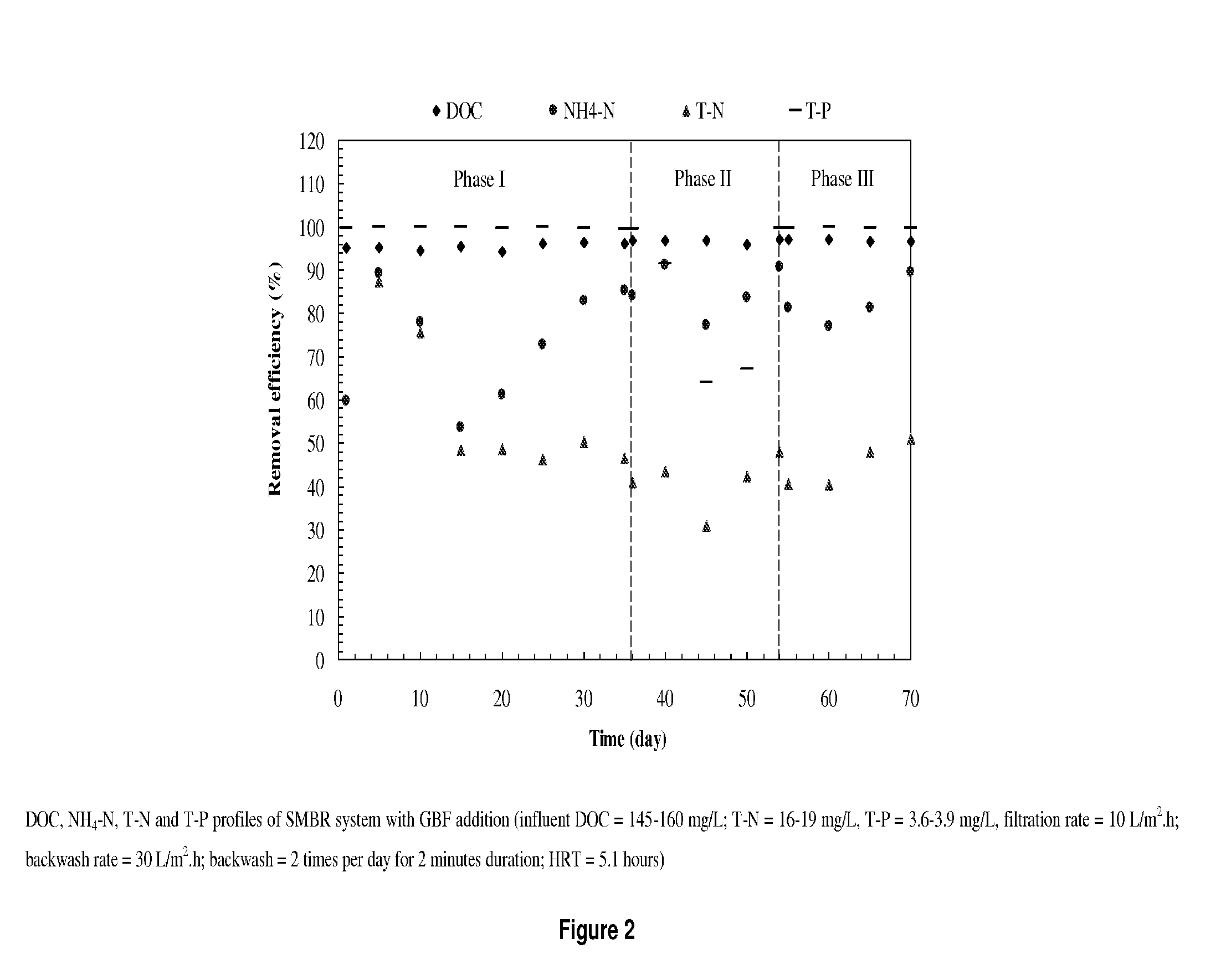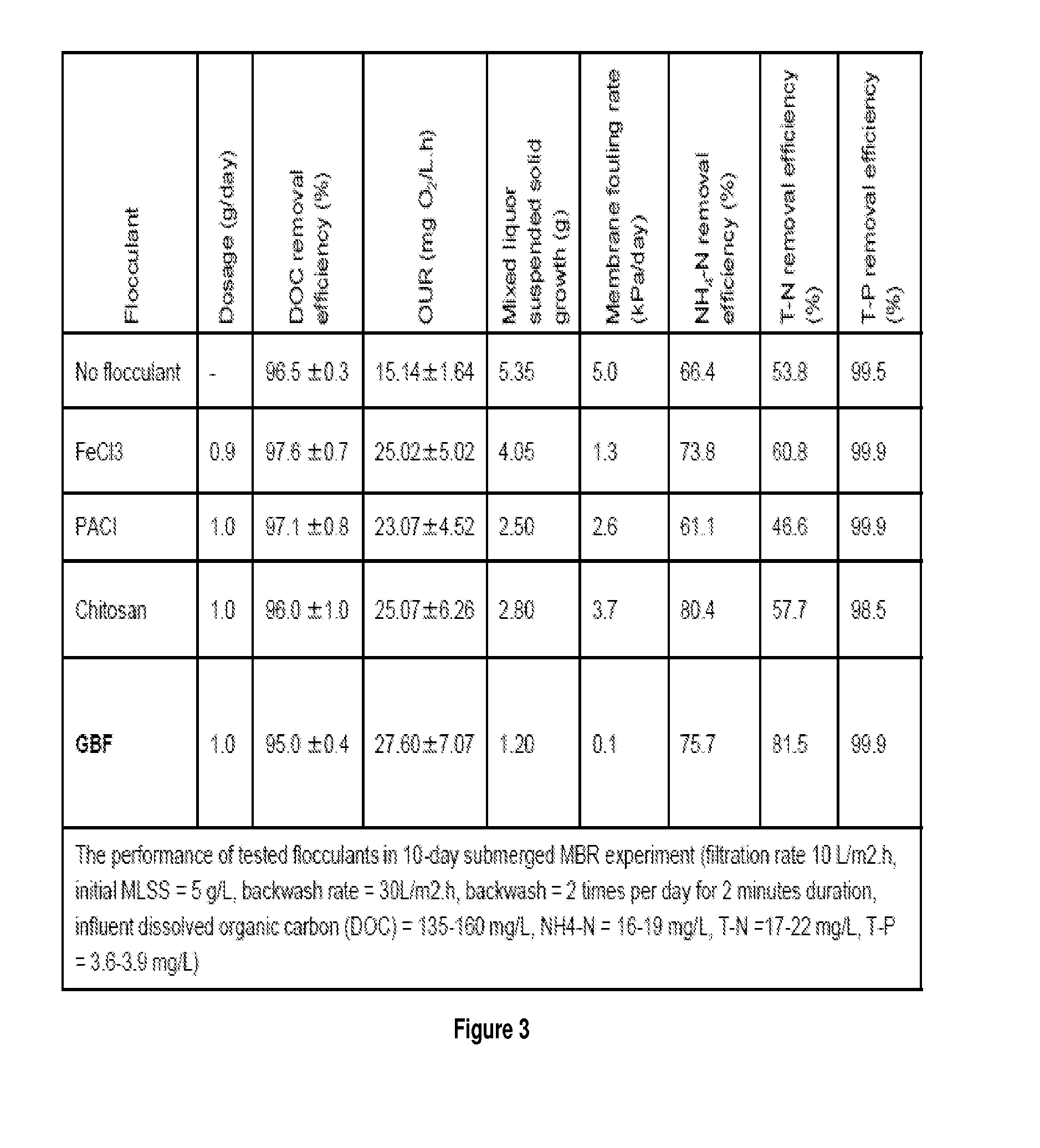Method for enhancing biological water treatment
a biological water and wastewater treatment technology, applied in the direction of multi-stage water/sewage treatment, other chemical processes, separation processes, etc., can solve the problems of less sought-after natural occurring bio-polymer flocculants in water treatment applications, environmental and health risks, and flocculation abilities, so as to enhance the bioactivity of biomass, reduce organic fouling and biofouling, the effect of enhancing the bioactivity
- Summary
- Abstract
- Description
- Claims
- Application Information
AI Technical Summary
Benefits of technology
Problems solved by technology
Method used
Image
Examples
example 1
Anti-Fouling Properties of Biodegradable Water Treatment Mixture in membrane Bioreactor (MBR)
[0077]Studies of MBR treatment systems have demonstrated that addition of the flocculant / micronutrient / polymer mixture can result in a system trans-membrane pressure (TMP) which is maintained at a low level, only requiring back flushing every 12 hours. This is compared with every 1-2 hours for some MBR plants.
[0078]In a preferred embodiment, a natural, starch-based flocculant is included in the mixture to enhance the performance of the MBR, whilst remaining biodegradable, unlike some non-organic or synthetic products, which carry secondary environmental concerns. The significant reduction in membrane fouling which is achieved not only reduces the need to back-flush or clean the membranes, but also increases the critical flux characteristics of the system, which in turn increases the overall capacity of the MBR.
[0079]FIG. 1 shows how the addition of a preferred embodiment of the invention (...
example 2
Preparation of a Biodegradable Water Treatment Mixture (GBF)
[0090]In this embodiment (GBF) the flocculant / micronutrient / polymer mixture is in liquid form and can be simply handled. It can be dosed to the biological treatment system, ie membrane bioreactor, directly once per day. The procedure for making the mixture is as follows:[0091]1. Prepare micronutrient component as 1% solutions of ferric chloride (FeCl3), magnesium sulphate (MgSO4), sodium sulphate (Na2SO4) and zinc sulphate (ZnSO4);[0092]2. Prepare polymer component as a chitosan solution using 1% acetic acid;[0093]3. Disperse flocculant as 1000 mg cationic starch (CS) in distilled water to make 50 mL solution;[0094]4. Mix the components using the CS solution at the
[0095]CS:chitosan:FeCl3:MgSO4:Na2SO4:ZnSO4 ratio of 1000:25:80:50:50:1.
[0096]FIG. 3 shows a comparison of four different kinds of flocculants with the inventive mixture (GBF), including two metal salt flocculants (FeCl3and PACl) and one naturally-occurring polyme...
example 3
Study of Biodegradable Water Treatment Mixture in Submerged Membrane Bioreactor (SMBR)
[0097]A biodegradable water treatment mixture according to the invention (GBF) was produced using a natural starch-based cationic flocculant (HYDRA Ltd., Hungary). As discussed above, the mixture according to the present invention offers significant advantages over inorganic and synthetic polymer flocculants such as being derived from a renewable source of raw materials, very low cost, and readily degradable in the environment after use. In SMBR, microorganisms also can utilize the carbon source from flocculated bioflocs for microbial activity. The trial dose of the mixture in this study was 1000 mg / day at the first 10 days and 500 l mg / day afterwards.
[0098]Submerged Membrane Bioreactor (SMBR) Set-Up A polyethylene hollow fiber membrane module was used with the pore size of 0.1 lm and surface area of 0.195 m2 (Mitsubishi-Rayon, Japan). The effective volume of the bioreactor was 10 L and the perm...
PUM
| Property | Measurement | Unit |
|---|---|---|
| Pressure | aaaaa | aaaaa |
| surface area | aaaaa | aaaaa |
| volume | aaaaa | aaaaa |
Abstract
Description
Claims
Application Information
 Login to View More
Login to View More - R&D
- Intellectual Property
- Life Sciences
- Materials
- Tech Scout
- Unparalleled Data Quality
- Higher Quality Content
- 60% Fewer Hallucinations
Browse by: Latest US Patents, China's latest patents, Technical Efficacy Thesaurus, Application Domain, Technology Topic, Popular Technical Reports.
© 2025 PatSnap. All rights reserved.Legal|Privacy policy|Modern Slavery Act Transparency Statement|Sitemap|About US| Contact US: help@patsnap.com



